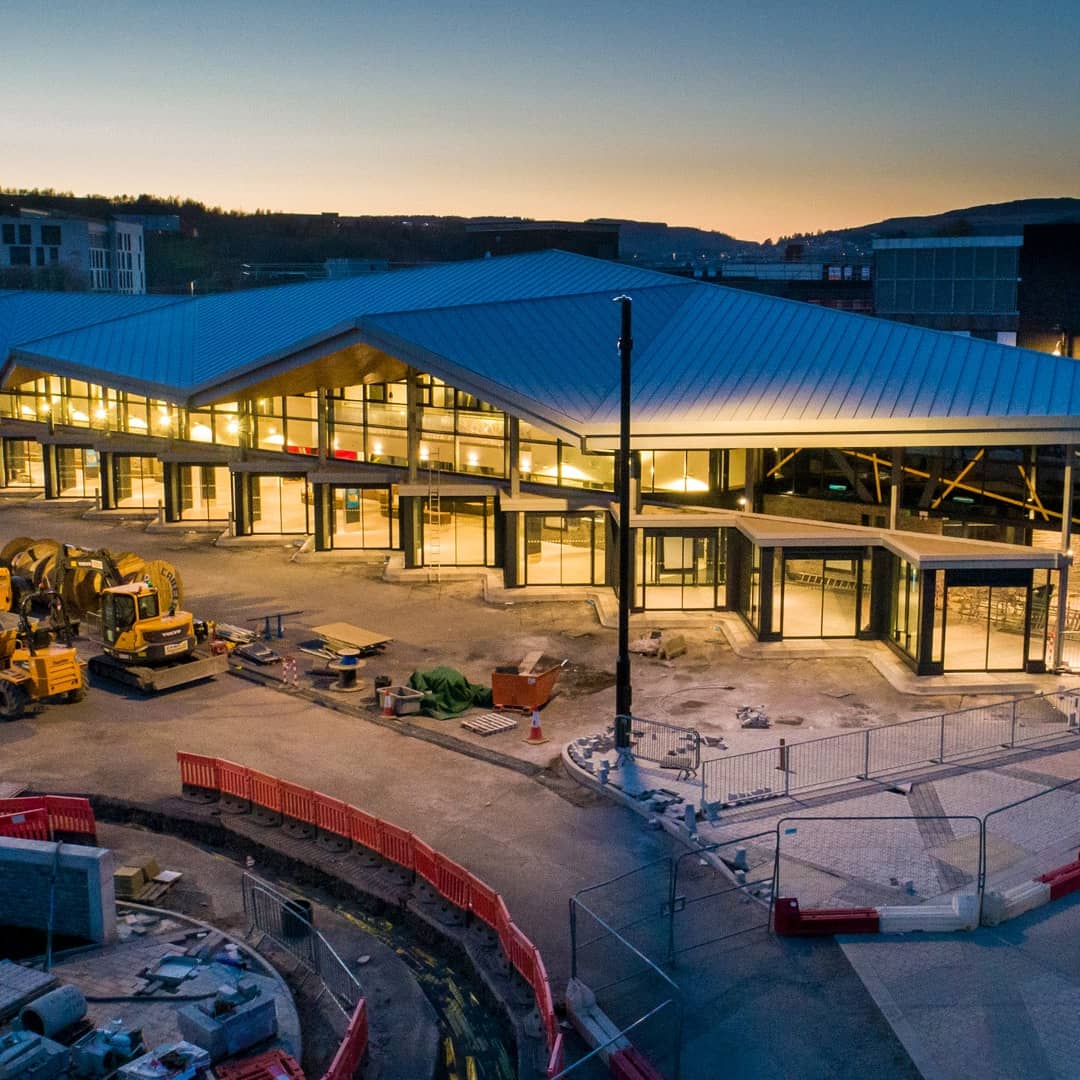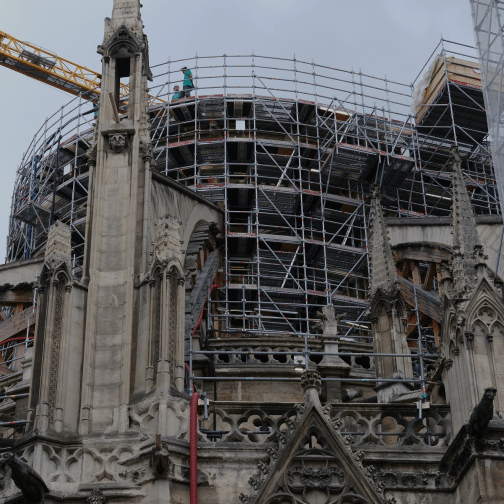The block along Klarastrandsleden on Torsgatan in central Stockholm is home to one of the city’s most famous façades. The warm red building was completed in 1906 from a design by Ferdinand Boberg, one of Sweden’s most famous and esteemed architects. The building has colloquially been referred to as “the Stockholm Vatten building,” as the company was located there until 2016. The historic property has now been transformed into a state-of-the-art office space; elaborate details around windows and doors are now juxtaposed with large, bright spaces and modern installations.
"We now realise that we can have one program for all parts instead of using a number of different tools that we need to provide training in. One platform covering all parts is invaluable to us.”
Aron Björkholm
Project Engineer
Zengun
“This is a landmark in Stockholm. The building has absolutely fantastic qualities and the details can be seen in all the different parts and joinery in the building,” says Fredric Jacobson, project manager at Zengun.
Zengun has been on site on Torsgatan since 2018 to ensure that the journey from old to new progresses as smoothly as possible.
“We have done most of the work in-house—everything from façades and load-bearing parts of the building to surface finishes and roofing. Everything is like new again,” Jacobson explains.
With summer arriving, the work has entered an intensive final phase before the upcoming inspections. Around 200 people are at the construction site every day, the majority of whom are skilled workers, and there is a lot to get done before the handovers can begin.
With its 220 employees, Zengun is one of Stockholm’s leading construction companies. Its focus is on commercial properties and its business normally comes from major property owners who need to renovate. Although Zengun is still a relatively young company—celebrating its 10-year anniversary last fall—its revenue amounted to approximately SEK 2.5 billion in the fall of 2019.
“When something is tricky or complex, that is where we come into our own. We want to be the leading contractor when it comes to complex projects in the Stockholm region,” explains Aron Björkholm, project engineer at Zengun.
The obvious choice
For Zengun, Bluebeam is an obvious tool for bringing the schedule together.
“Bluebeam, our scheduling program and email are our three main communication tools,” says Julia Kågström, a business unit manager at Zengun responsible for ensuring that the project is completed successfully.
Different projects have different conditions, but the use of Bluebeam is the common denominator for most of Zengun’s buildings, according to Björkholm.
“Everyone who works as a salaried employee currently has access to Bluebeam and uses it in some form. We have used it since 2012, and if we consider the alternatives, there isn’t anything that is as good for construction specifically,” he says.
"The advantages of Bluebeam are definitely the time savings and the clarity in being able to make sure that everyone is looking at the same things. It eliminates the risk of people picking up the wrong documents or the like.”
Julia Kågström
Business Unit Manager
Zengun
“It feels very tailored for our business, and you can also tailor it further when needed.”
Björkholm also highlights the advantage of having all functions under the same umbrella.
“We now realise that we can have one program for all parts instead of using a number of different tools that we need to provide training in. One platform covering all parts is invaluable to us,” Björkholm says.
In recent years, Jacobson has seen a complete office landscape emerge from all the drawings and models the team has worked on.
“In my role, I produce a lot of 2D drawings and documents, and there is currently no other program I would open them in than Bluebeam Revu. I think the exchange of information via the program is fantastic. Being able to share and work in the same documents, create documentation for investigations, and put it all together in a nice and informative way directly in the tool,” he says.
One and a half months saved
For the construction on Torsgatan, it is precisely this time aspect that Zengun highlights as the major advantage of working with Bluebeam.
“The advantages of Bluebeam are definitely the time savings and the clarity in being able to ensure that everyone is looking at the same things,” Kågström says. “It eliminates the risk of people picking up the wrong documents or the like.”

“Bluebeam has significantly reduced the review time and meetings for us. Just the feeling of always being able to keep track of statuses has led to more effective reviews and time savings,” Jacobson says.
He remembers a time without digital tools when piles of paper grew as frustration mounted.
“Meetings were chaotic in those days, with grease-proof paper drawings and notes. It is now impossible to add duplicate comments, and work can continue even during the review. All our meetings are much shorter,” he says.
With Bluebeam it has also been possible for the team at Zengun to amend the documents as soon as comments are received.
“Previously there might have been a long chain of contact, and if one person was absent, then the entire chain would be held up,” Jacobson says.
“In a year we have definitely been able to save about one and a half months of time during the planning phase just by streamlining the review process,” Kågström says. “Comments on documents, amendments that the planners need to make, all of that can be resolved at once instead of sitting around waiting for answers, and that means the work doesn’t have to be put on hold.”
Safety is also improving on the construction site as the risk of a mistake being made is greatly minimised thanks to Bluebeam.
“The more we draw digitally and work in production with digital tools, the more certain we can be that everything is correct,” Jacobson says. “We minimise the risk of additional work or the need to backtrack and fix any mistakes.”
“It feels like we’re only scratching the surface of what the program can do. Often someone will peer over your shoulder and ask, “Why don’t you do it like this?”, and then you’ve learned something new again,” he continues.
From old to new
But how do you create modern office landscapes in such old environments—is it even possible?
“Because the property on Torsgatan is a listed building, we have worked closely with a curator throughout the project,” Jacobson says. “We need to make sure that we preserve all the fantastic details for the future. We have skilled architects and consultants, and you have to weigh your priorities when deciding which measures need to be taken.”
“But sometimes there is a major clash between the aesthetic and the legal requirements applicable today,” he says, laughing.

Zengun has worked with older buildings in previous projects, but never something on this scale, and perhaps not a building as well known as this.
“The greatest challenge for us has quite simply been that the property is from 1906,” Kågström says. “There are wonderful sets of record drawings from that time, but they are all drawn by hand. Since the property had the same owner for a long time, not all of the changes that were made have been recorded in the documents.”

The digital way of working
For a company that normally works entirely digitally on a daily basis, it was initially a challenge to come to grips with old documents and drawings that did not always match the reality. Walls were opened up, and where there ought to have been a concrete pillar according to the documents, there was instead an empty space. So before the work could start properly, all the old paper drawings had to be digitised.
“The ambition from the very beginning was to work entirely digitally. The first step was quite simply to scan the entire building to get an idea of how it looked in modern times, and then to produce a digital file in which the team could work and draw the project,” Kågström says.
After about two weeks using digital measuring tools and 3D scanners, an image took shape of the architect Ferdinand Boberg’s building, this time made out of ones and zeroes. However, there were still some adjustments left to make.
“The digital documentation is never 100% correct at first, but at least we have a document we can get started with,” Kågström says. “Architects and designers then often need to make refinements, and after that we end up with something that is quite close to reality.”

It was not just old drawings that haunted the team. Working in such a historic building also brought with it a number of unexpected challenges. Concrete that is over 100 years old and similar parts in an old building can be very unpredictable to work with, and may involve multiple interventions during the work, according to Kågström.
“Many of the interventions we have needed to make were not planned from the start, neither by us nor the client, but arose during the work. And of course all this affects the schedule,” she says.
The digital transition
Although Zengun has advocated a digital way of working for a long time, not everyone in the industry is on board. But it looks like a generational shift is happening.
“We have previously been met with strong resistance when it comes to digitalisation in the construction industry, but nowadays there is hardly any resistance anymore,” Jacobson says. “So it is nice not to have to butt heads. Working digitally is increasingly being met with approval, which is really great.”
"In a year we have definitely been able to save about one and a half months of time during the planning phase just by streamlining the review process. Comments on documents, amendments that the planners need to make, all of that can be resolved at once instead of sitting around waiting for answers, and that means the work doesn’t have to be put on hold.”
Julia Kågström
Business Unit Manager
Zengun
“Zengun’s business concept is to be flexible with our customers and work in the way that is best for the project, as each project is unique. This way we need tools that are easy to adapt to each condition,” Kågström adds.
One condition of bringing so many consultants and clients on board is that the digital tools be as user-friendly as possible.
“Those with production-based roles would rather not sit in front of a screen all day. If they can quickly access the information and return to their trade or production, they are very satisfied,” Björkholm adds.
Most of Zengun’s various subcontractors and partners in the project have not had any problems familiarising themselves with the program. “If you work in construction these days, Bluebeam has become something of a standard,” Jacobson says.
“While there is always resistance to change, digitisation affects the construction industry as well. We handle most things entirely digitally today, and there are many documents and drawings that I never print out,” Jacobson says. “In the process of transition there will always be some who find the adjustment difficult, and that is why user-friendliness is really important to bring those people on board.”
He highlights user-friendliness as the main reason why Bluebeam has been so well received on construction sites.
“You don’t need any previous programming skills to get started. Many people are starting to test the individual functions, such as measuring a wall. Then they realise, “Wow, that was so easy and I didn’t even need a scale ruler,” and then they move on to the next function and so on,” Jacobson says.
* Zengun is headquartered in Sweden and purchases Bluebeam products through AEC AB, a Bluebeam Gold Reseller.




